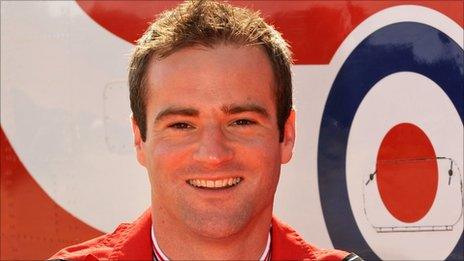Profile: The Red Arrows
- Published
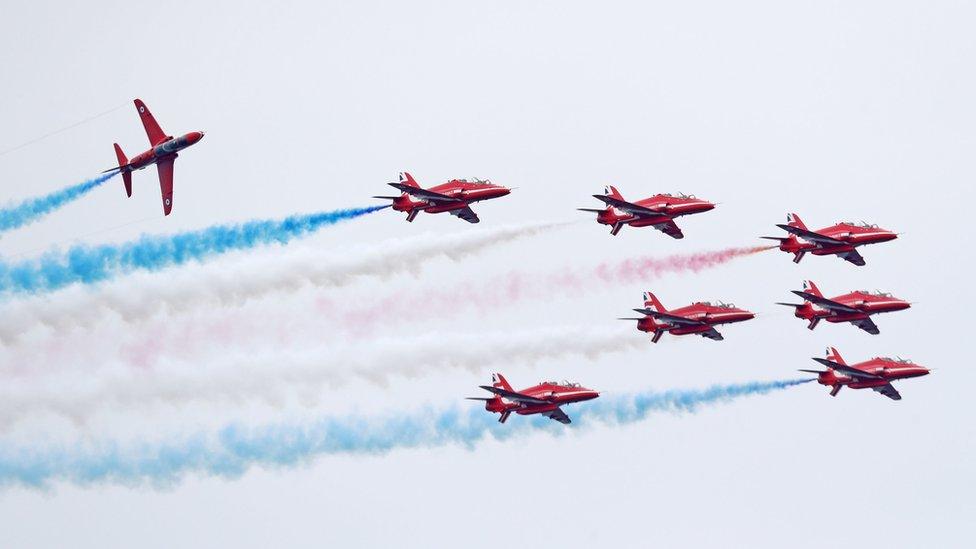
The aircraft are flown by fast jet pilots all from front-line Royal Air Force squadrons
For five decades, crowds around the world have delighted at the daredevil displays of the Royal Air Force Aerobatic Team, better known as the Red Arrows.
Their breathtaking airborne stunts with multicoloured vapour trails, carried out in distinctive single-engine red jets, have become a familiar sight in the summer skies at air shows and military events.
The team was established back in 1965, ending an era during the 50s and 60s in which almost every RAF flying training school and some squadrons each had their own aerobatic display team.
The Red Arrows began life at RAF Fairford in Gloucestershire, their name a combination of two earlier teams - the Black Arrows and the Red Pelicans.
In its first year, the team flew 65 displays in the UK and Europe, and was awarded the Britannia Trophy by the Royal Aero Club for its outstanding contribution to British prestige in the field of aviation.
The displays comprised seven aircraft at first, only occasionally increasing to nine.
The team officially became nine strong in 1968, after which the Red Arrows' diamond-shaped flying formation - the Diamond Nine - became iconic and was registered as an official trademark.
Red, white and blue
The Red Arrows have used the Hawk T1 aircraft, which is the Royal Air Force's advanced trainer, since 1979 when it replaced the Folland Gnat.
The Hawk T1's Rolls Royce Adour engine can power the aircraft to a top speed of Mach 1.2.
The team's famous vapour trails are produced by pumping diesel mixed with coloured dye into the planes' jet exhaust, and each aircraft can carry enough diesel and dye to create one minute of red smoke, one minute of blue and five minutes of white during a display.
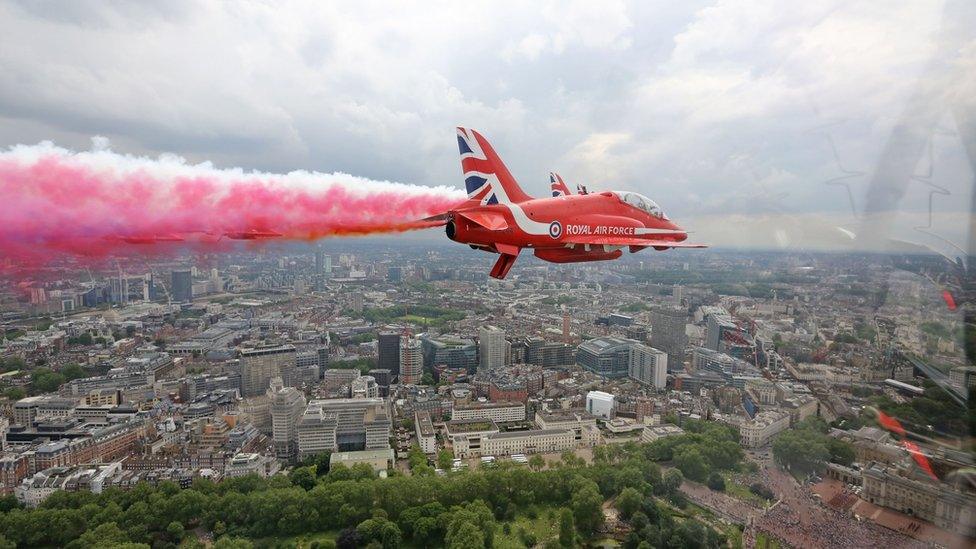
The planes are modified for the team to generate smoke and give a faster engine response time
While the vapour trails enhance the display for spectators, their use is mainly for safety reasons as they allow the pilots to judge wind speed and direction.
Each display pilot flies with the Red Arrows for three years, with three pilots being replaced at the end of every display season.
With each personnel change, all pilots move positions in the formation with the exception of team leader "Red 1".
The training season runs from the end of the summer, straight after that season's last display, until the following May.
During training, the squadron reverts to wearing green flying suits and overalls; members are only allowed to wear the signature red-and-blue suits when the team is certified ready to stage displays.
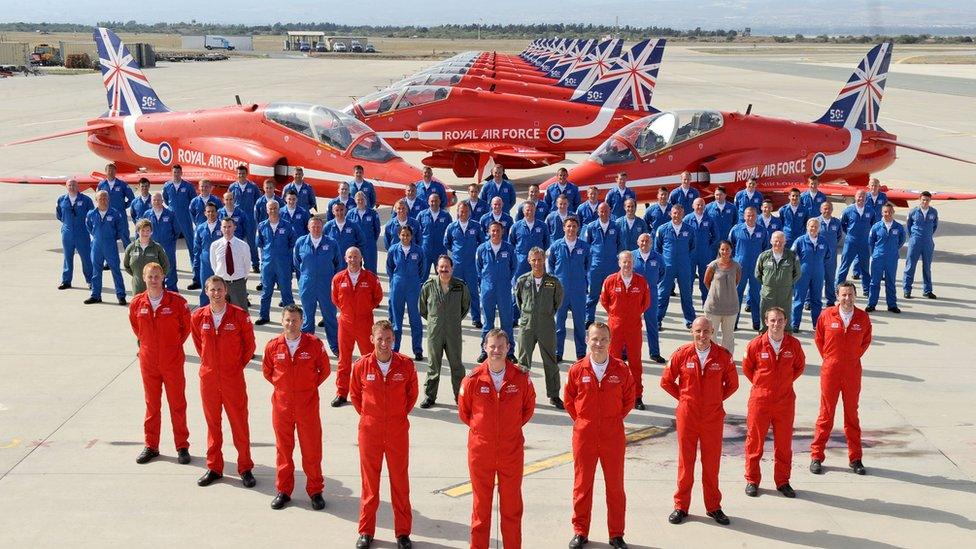
Pilots only wear the distinct uniforms when the team is certified ready to stage displays
Since 1965, the Red Arrows have flown more than 4,000 displays in 52 countries.
The team is intended to be the public face of the RAF, both at home and abroad. It is currently based at RAF Scampton in Lincolnshire.
The Red Arrows' official website says: "Today the Red Arrows are renowned throughout the world, acting as ambassadors for Great Britain when displaying overseas.
"They also support UK industry by demonstrating the capabilities of British equipment and expertise."
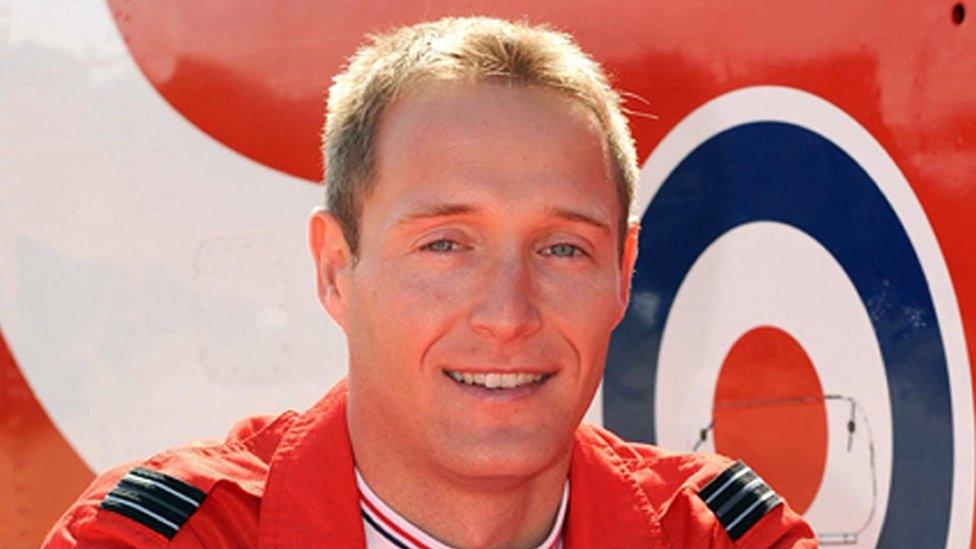
Red Arrows pilot, Flt Lt Sean Cunningham, died in 2011
One of the squadron's pilots, Flt Lt Sean Cunningham, was fatally injured in 2011.
He was ejected from one of the jets whilst conducting pre-flight safety checks at RAF Scampton, but the parachute on the seat did not then deploy.
Martin-Baker Aircraft Ltd - the company that manufactured the seat - admitted to breaching safety laws, and in 2018 it was fined £1.1m.
- Published20 August 2011
